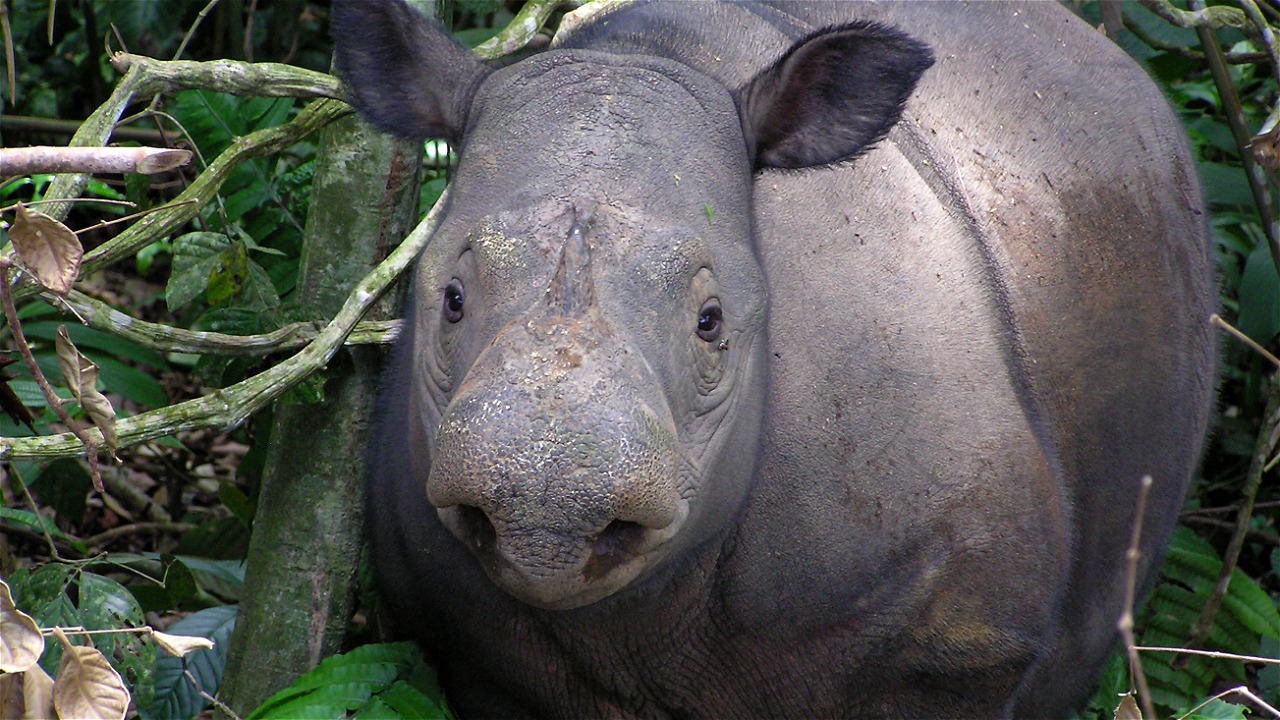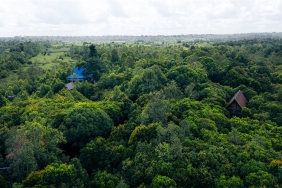GET TO KNOW THE SUMATRAN RHINO BETTER!
By: Nur Arinta
The Sumatran rhino (Dicerorhinus sumatrensis) is the most endangered large mammal species. This is due to illegal poaching which has caused its population to decline by more than 80 percent over the past 20 years. This significant population decline means that the Sumatran Rhino is now thought to exist only in Indonesia.
What is not widely known about the Sumatran Rhino is the fact that it is not only found in Sumatra, but also in several other areas, including Borneo and the Malay Peninsula. Why is that? Check out this article to know more about the Sumatran Rhino.
Sumatran Rhino is one of the five types of rhinos in the world. Based on the results of Foose and van Strien's research published in 1997, Sumatran Rhino populations have been found in the Himalayan foothills of Bhutan, Nepal, Bangladesh, then in areas in Southern China (Yunnan), Myanmar, Thailand, Cambodia, Laos, Vietnam, the Malay Peninsula, Sumatra, and Kalimantan (Borneo).
Taxonomically, Sumatran Rhinos are divided into three subspecies namely Dicerorhinus sumatrensis sumatrensis which lives in Sumatra and the Malay Peninsula, Dicerorhinus sumatrensis harrissoni which lives in Borneo, and Dicerorhinus sumatrensis lasiotis which is spread in Nepal, Bangladesh, Myanmar, and surrounding areas. Based on the results of Nowak's 1999 study, D.s. lasiotis has been declared extinct in the three countries where it lives. But there is still a possibility of a remnant population in northern Myanmar.
According to the international conservation organization IUCN (International Union Conservation Network), the status of the Sumatran Rhino is Critically Endangered. This is due to a very significant population decline over three generations (a span of an estimated 20 years). WWF International data shows that the population of this animal, which is closely related to ancient rhinos, is now estimated to be less than 100 adult individuals and is potentially threatened with a 25 percent decline in the next 10 years.
The significant decline in the Sumatran rhino population is caused by several major threats. The first threat is rhino poaching, which has been going on for a long time now, to fulfill the demand for rhino horn or other body parts believed to be an elixir of traditional medicine on the black market. This massive poaching has caused the Sumatran rhino population to become very small in each region of its habitat. This can make reproductive activity decrease, the process of rhino birth in their habitat rarely occurs, and there is a considerable risk of inbreeding depression. In addition, the small population of Sumatran Rhinos in an area can increase the potential for inbreeding (incest) in rhinos which ultimately affects the decline in genetic diversity and causes the risk of low life expectancy for these rhinos.
Sumatran rhinos are more adaptable to various habitat heights, compared to Javan rhinos that can only live in lowlands. Nevertheless, the Sumatran Rhino is a sensitive animal. Referring to the results of Nowak's research, in 1999, the habitat of the Sumatran Rhino is tropical rainforest, mossy mountain forest, forest edge, and secondary forest.
Sumatran rhinos prefer intact dense forest conditions and tend to stay away from damaged forests. Unfortunately, the forests that are the habitat of Sumatran Rhinos in Indonesia continue to shrink. WWF-Indonesia data shows that in 2016, Sumatra's forest area was only 10.4 million hectares (24% of Sumatra's island area), while Kalimantan's forest cover was only 40 million hectares (53.9% of Kalimantan's island area). Forests that serve as habitat for rhinos continue to decrease due to illegal logging activities, oil palm plantations, mining areas, and so on.< br />
The existence of habitat is very important to preserve the Sumatran Rhino. It turns out that you can contribute to preserving the smallest species of the rhino family. How can you do that? Start being a good buyer. Because by being a good buyer, especially in consuming processed forest products, you are helping to save the Sumatran Rhino and its habitat. You can start by paying attention to products that have been certified as environmentally friendly. Some types of product certificates include RSPO (Roundtable Sustainable Palm Oil) and ISPO (Indonesia Sustainable Palm Oil) for processed palm oil products, and Forest Stewardship Council (FSC) for processed wood products. Let's preserve the remaining population of Sumatran Rhinos and their habitat from simple things! Because even the smallest positive thing can have a tremendous impact on their sustainability.





